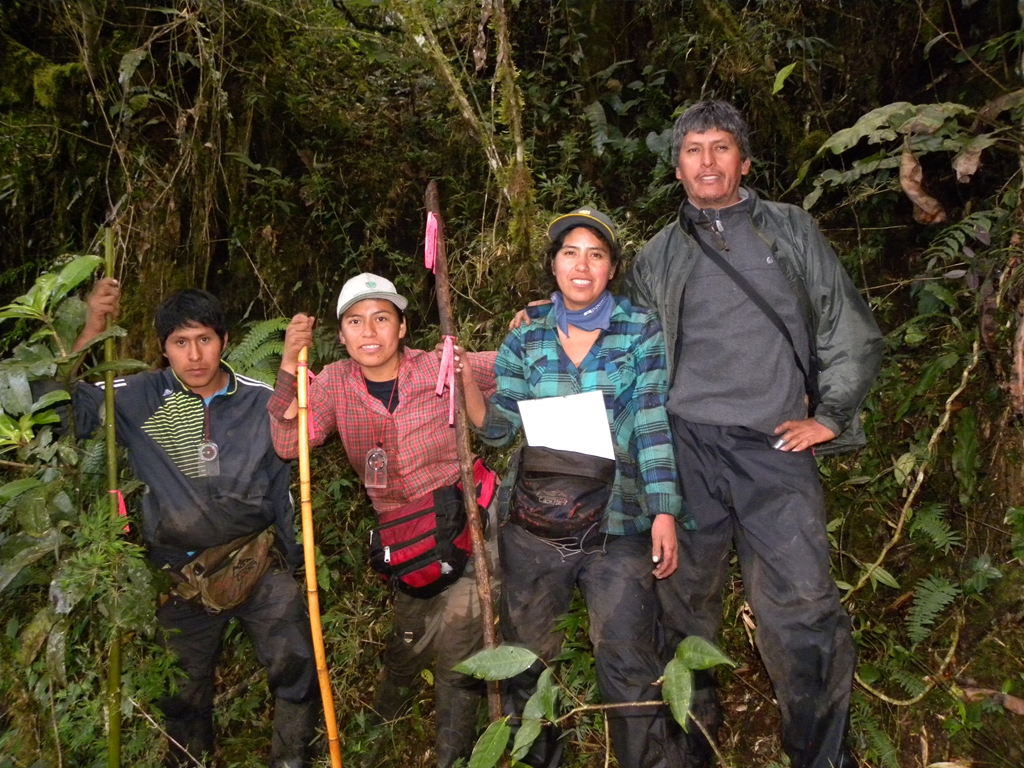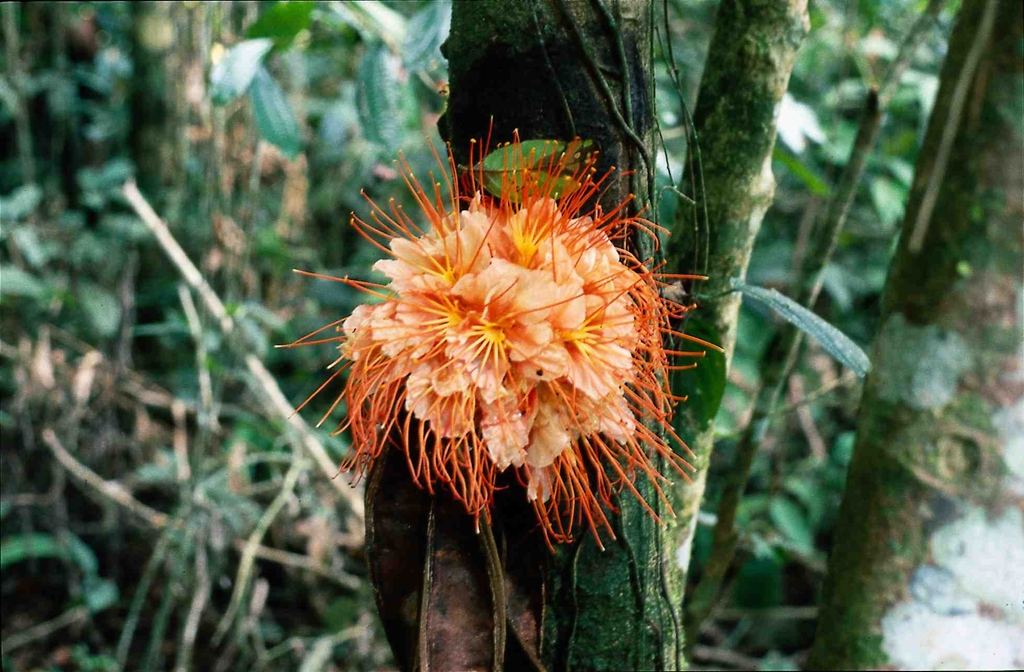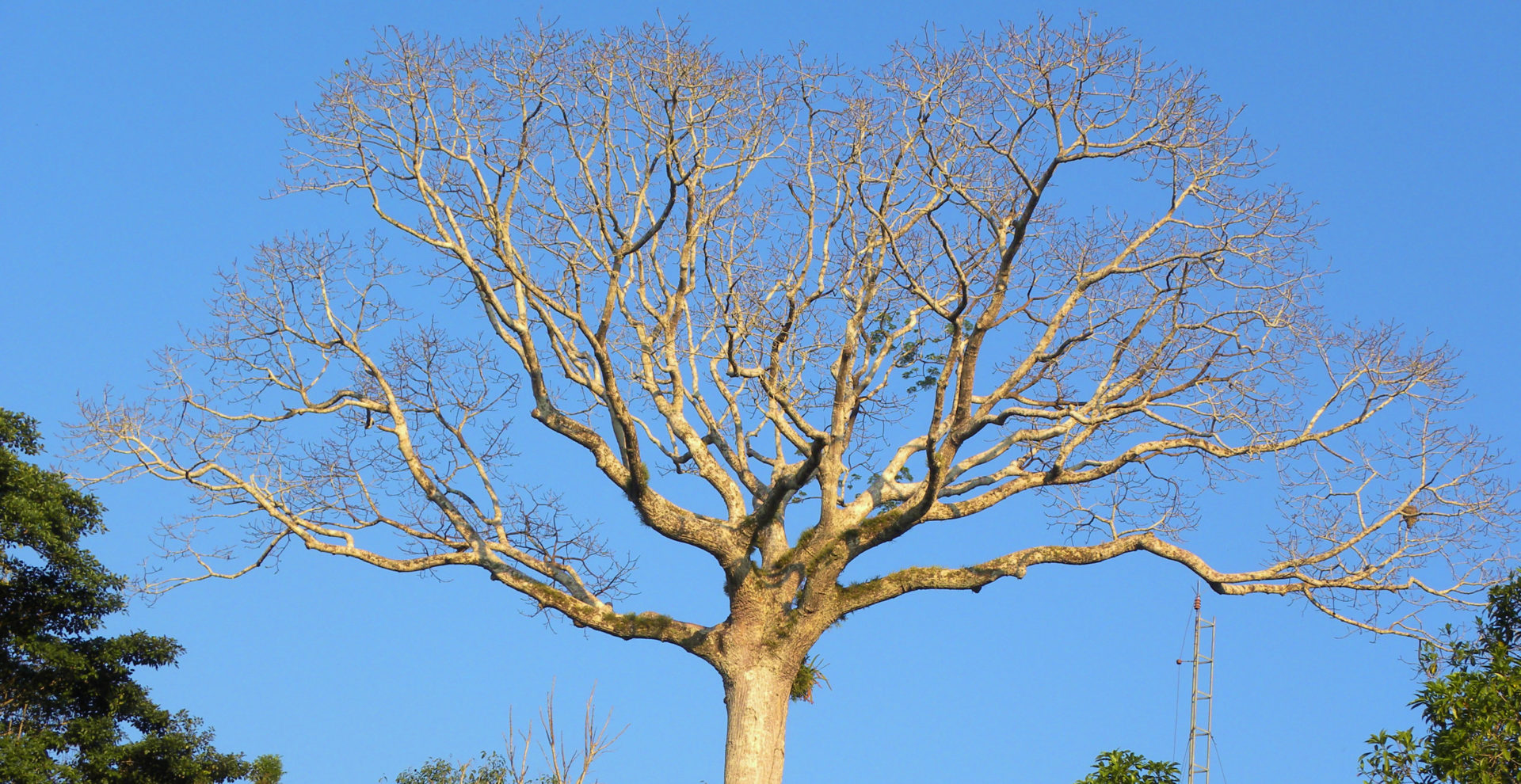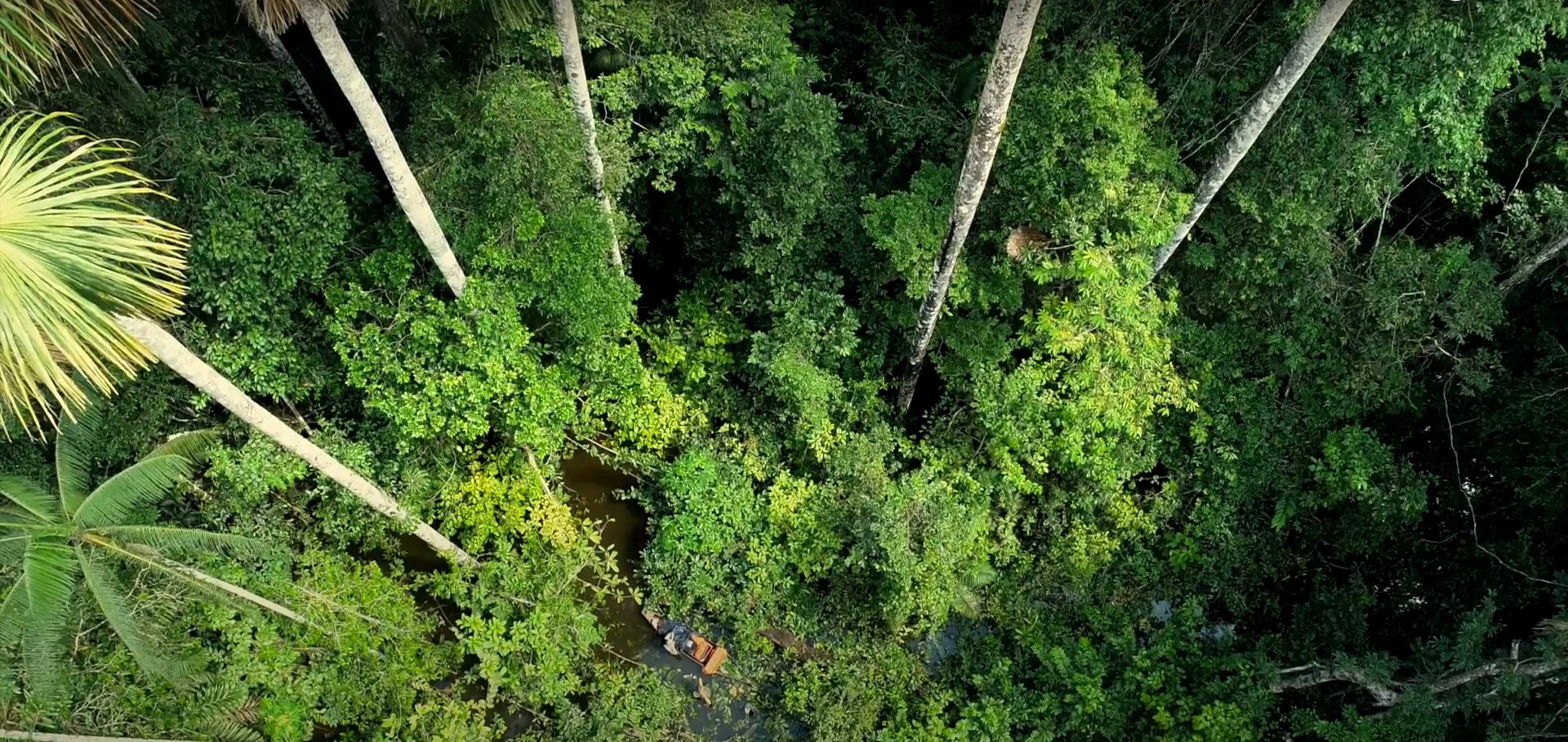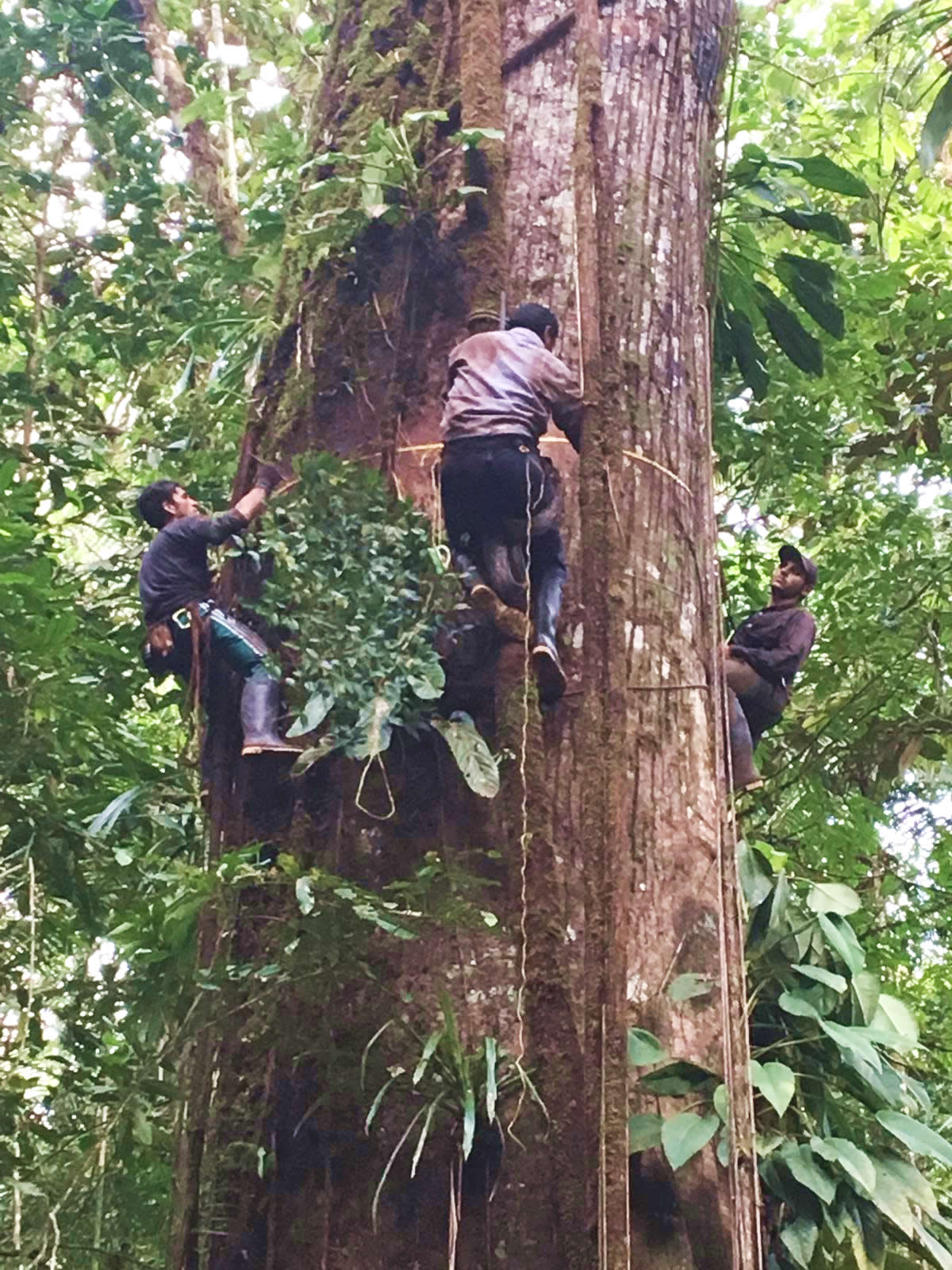-
Forest science networks support space missions
Forest science networks support space missions ForestPlots.net, the global network of tropical forest scientists led by Leeds, is working with the European Space Agency (ESA) to verify its Biomass satellite mission. The ESA Biomass satellite, which was launched in April 2025, uses a cutting-edge radar to scan dense forest canopies and measure tree trunks, branches,…
-
Hiding in plain sight – rare, new species of giant tree discovered in Amazon forest plot
Hiding in plain sight – rare, new species of giant tree discovered in Amazon forest plot Almost all South American forest plots have trees which botanists struggle to identify. This new species of giant tree was first collected in a RAINFOR plot at Tambopata in 1985 by Al Gentry and Rodolfo Vasquez. Only now has…
-
A new space age for tropical forests – but field-workers matter more than ever
A new space age for tropical forests – but field-workers matter more than ever A new era of forest monitoring has quite literally taking off, ushering in what scientists are calling the ‘forest space age’. On April 29, ESA launched its revolutionary Biomass mission, the first satellite to carry a P-band radar into space –…
-
Remembering Antonio Peña Cruz
Remembering Antonio Peña Cruz We bring you the sad news that Antonio Peña Cruz, professional tree climber and botanical collector, recently passed away. He worked in the Amazon forests for the last three decades. He was an enthusiastic collaborator and participant of RAINFOR, providing long-term plot data and actively supporting the intense plot research activities…
-
Tales from the ground – how the crisis in Venezuela is destroying forests and challenging RAINFOR’s effort to help Venezuela sustain its forest science
Tales from the ground – how the crisis in Venezuela is destroying forests and challenging RAINFOR’s effort to help Venezuela sustain its forest science Venezuela, home to highly biodiverse forests that cover about half its land, has some of the longest-running forest monitoring projects in the tropics. This represented a pioneering effort in understanding old-growth…
-
Species Matter
Species Matter! Amazon forest species vary in drought tolerance, influencing their resilience to changing water conditions and ultimately the Amazon carbon sink. A collaboration involving 80 scientists has identified the regions of the Amazon rainforest where trees are most likely to face the greatest risk from drier conditions brought about by climate change. Published in…
-
Research reveals the importance of water table depth in forest growth and carbon modelling in the Amazon Region
The Amazon hydrological cycle is already changing due to climate change and this is expected to intensify in the future. The water availability is one of the main factors that influence plant growth and mortality, and the water table depth is an important indicator of access to groundwater. Forests that grow on shallow water tables…
-
How Can we Make Forest Data Fair? Put People – Not Data – First
Our article, with 25 tropical forest science leaders from Africa, Asia, Europe, North and South America addresses a huge challenge at the heart of global change science and policy. Writing in Nature Ecology and Evolution we report on the neglected equity issues ignored for too long.(1) Richest countries have the least tropical forest, but most scientists and economic…
-
RAINFOR plays a critical role supporting Peru’s government with their submission to the UNFCCC in 2021
RAINFOR plays a critical role supporting Peru’s government with their submission to the UNFCCC in 2021 As part of the global process to reduce carbon emissions, nations need to report their forest emissions by submitting national “Forest Reference Emission Level” (FREL). RAINFOR colleagues played a critical role supporting Peru’s government with their submission to the…
-
Taking the pulse of Earth’s tropical forests using networks of highly distributed plots
Taking the pulse of Earth’s tropical forests using networks of highly distributed plots Our article, published in Biological Conservation explains the origins of RAINFOR and ForestPlots.net, and how the power of collaboration has transformed forest research in Africa, South America and Asia. The paper, which includes 551 researchers, outlines 25 years of discovery in the carbon,…
-
Tropical forests can handle the heat, up to a point
Tropical forests face an uncertain future under climate change, but new research published in Science suggests they can continue to store large amounts of carbon in a warmer world, if countries limit greenhouse gas emissions. The world’s tropical forests store a quarter-century worth of fossil fuel emissions in their trees alone. There are fears that global heating can…
-
En Bolivia: Impacto Grande de las Parcelas Permanentes y Colaboración con Redes Internacionales
Vincent Vos nos envió un análisis interesante. La colaboración multiplica el impacto científico de los investigadores. Para UAB en Bolivia, no solo ha podido continuar las remediciones de las parcelas, pero también favoreció el uso de los datos generados en más de 20 artículos en reconocidas revistas científicas internacionales como Nature, Science y Global Change Biology.…
-
Scientists unravel how and why Amazon trees die
This huge study unravels the factors controlling tree mortality rates in Amazon forests and helps to explain why tree mortality is increasing across the Amazon basin. The capacity of the Amazon forest to store carbon in a changing climate will ultimately be determined by how fast trees die- and what kills them. Tree mortality is…
-
Rainfor data contributes to the FOS
Rainfor data contributes to the FOS, Forest Observation System, building a global reference dataset for remote sensing of forest biomass. See Schepaschenko et al (2019) The Forest Observation System, building a global reference dataset for remote sensing of forest biomass Scientific Data 6 (1), 1-11 DOI: 10.1038/s41597-019-0196-1
-
IPCC Tropical Forest Carbon Stocks
Rainfor data contributes to new IPCC default values for tropical forest carbon stocks. See: Suarez et al (2019) Estimating aboveground net biomass change for tropical and subtropical forests: Refinement of IPCC default rates using forest plot data Global Change Biology 25 (11), 3609-3624 DOI: 10.1111/gcb.14767
-
Amazon forests failing to keep up with climate change
A team of more than 100 scientists has assessed the impact of global warming on thousands of tree species across the Amazon to discover the winners and losers from 30 years of climate change. Their analysis found the effects of climate change are altering the rainforest’s composition of tree species but not quickly enough to…
-
Capacity building to support management
The project “Monitoring protected areas in Peru to Increase forest resilience to climate change (MonANPerú)” led a highly successful training course to analyse the dynamics and ecological changes in Peruvian tropical forests, at the National Agrarian University of La Molina, 25-26th July, 2018. The course was attended by 20 people, including students, researchers and specialists from…
-
Integrating forest monitoring in protected area management in Perú
he project “Monitoring protected areas in Peru to Increase forest resilience to climate change (MonANPerú)” led a series of discussion and practical training sessions in Lima, from July 23 to 26. The goal was to present progress on the project’s work to give scientific support to protected area (PA) management in Peru using data from…
-
New article led by Edgar VICUÑA MIÑANO of the Peruvian National Park Service (SERNANP)
Using our expanded network of forest plots in the Peruvian Amazon for the first time we are able to show that Peruvian Amazon protected areas act as a carbon sink: a key ecosystem service of international importance. This has been quantified as 0.52 Mg C ha-1 year-1 (1990-2017) for the intact Amazonian forest in the…
-
Experiments and observations together show how the distribution of Amazon trees predicts their tolerance to drought
Nowhere on Earth has more species than tropical forests, but climate change may now threaten thousands of trees here. How can we efficiently predict which are at risk and which are safe – without doing an impossible number of experiments? One way may be to use details of species distributions to predict their climate sensitivity.…

